![]()
|
John
Ridgway & Co |
Location and period of operation:
|
John
Ridgway (& Co) |
Shelton |
c.
1830 |
1855 |
|
Porcelain and Earthenware manufacturer at Cauldon Place, Shelton, Stoke-on-Trent, England. John Ridgway was renowned for producing high-quality earthenware and porcelain, including innovative transfer-printed designs that gained popularity both in Britain and abroad. He expanded
the pottery works at Cauldon Place, helping establish the Ridgway brand as one of the leading names in Staffordshire pottery - he exhibited at the Great Exhibition of 1851.
|
Formerly: J & W Ridgway
Subsequently: Ridgway, Bates & Co.
London Gazette
November 16,
1830
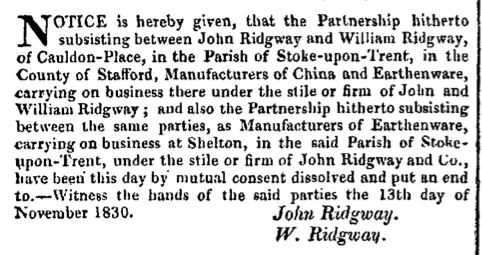
notice of the dissolution of
the partnerships
between John and William Ridgway
the business then continued as John Ridgway & Co
London Gazette
13 February
1846
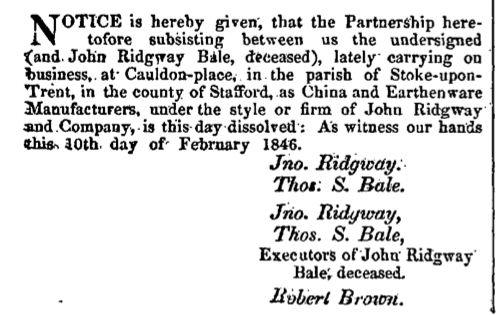
notice of the dissolution of
the partnership of John Ridgway,
Thomas Sanders Bale, John Ridgway Bale (deceased) and Robert Brown
the business then continued with
John Ridgway and
Thomas Sanders Bale.
London Gazette
19 September
1854
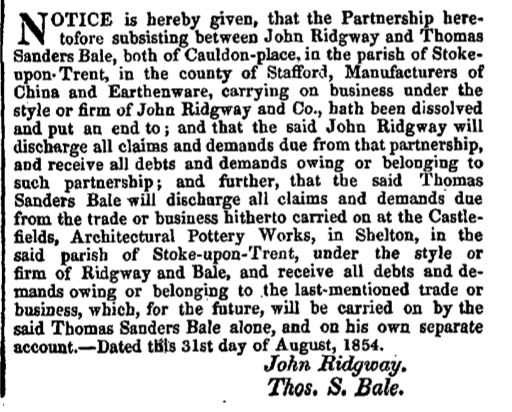
notice of the
dissolution of the partnerships between
John Ridgway and Thomas Sanders Bale
Selected
by the Committee for the Staffordshire Potteries
to exhibit at the Paris Universal Exhibition of 1855

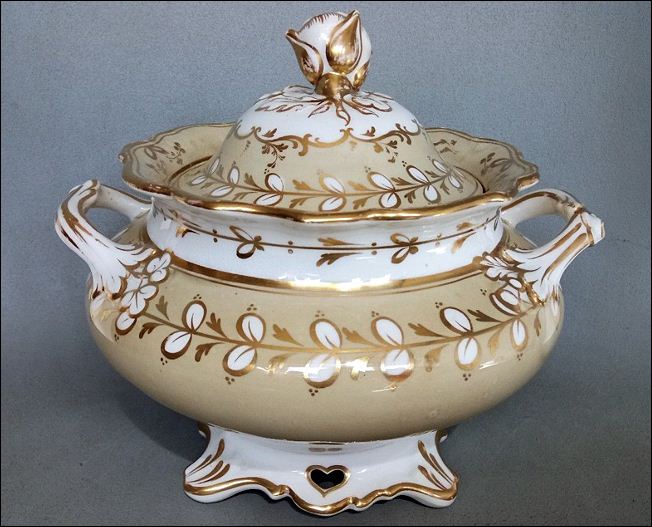
sugar bowl
the pattern number is given as 6912
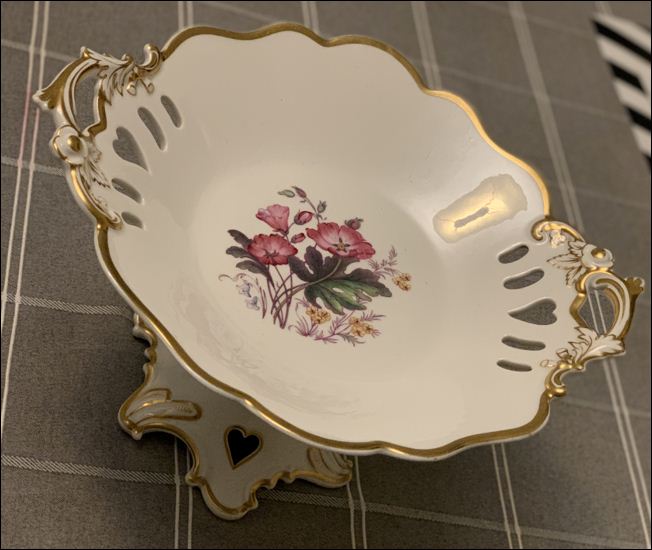
raised serving dish
c. 1830-37
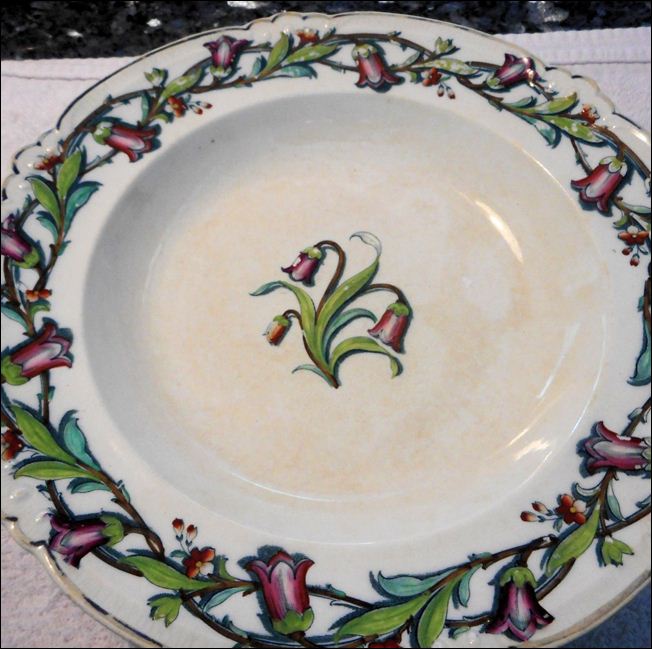
Soup bowl in the Blue Bell
pattern
sometimes this pattern was produced in blue monochrome
Imari style patterns
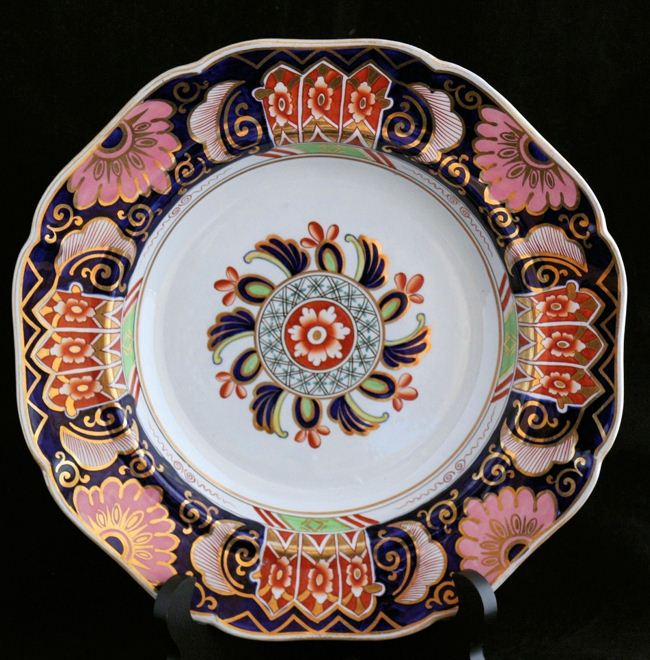
soup bowl in the Imari style
the pattern number is given as 5302
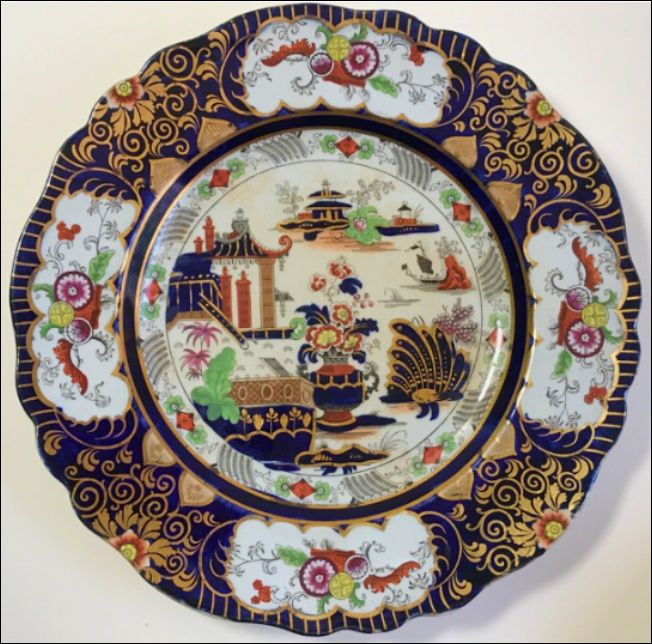
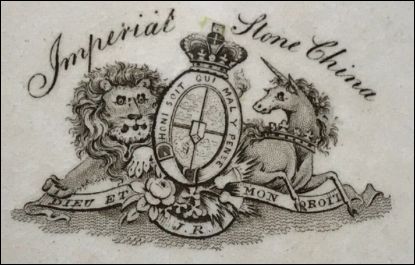
unnamed Pattern 5474 -
the successors T C Brown-Westhead, Moore & Co continued this pattern
- link to B-W, M & Co version -
a very similar John Ridgway
pattern is known which is marked 'Penang' (pattern 4099)
a blue & white simplified version of Penang was also produced
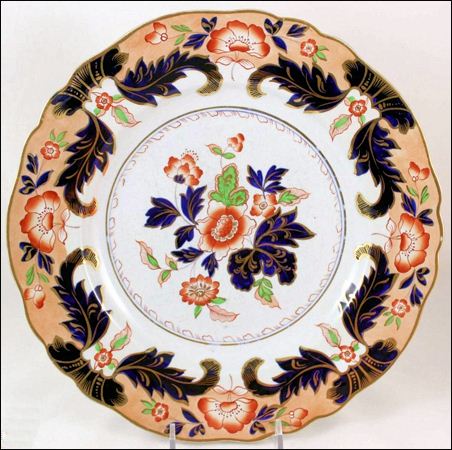 |
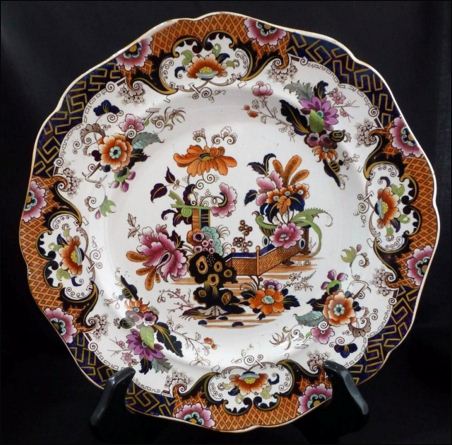 |
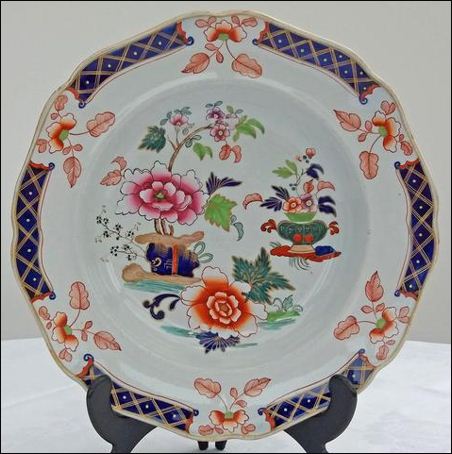 |
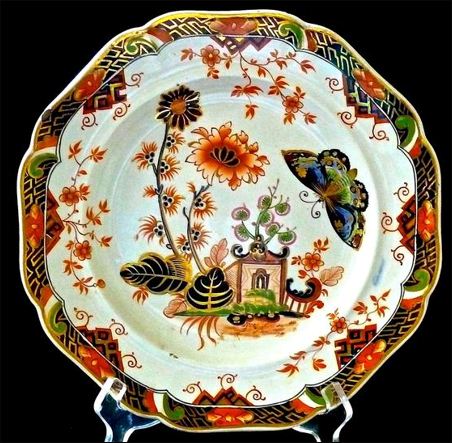 |
John Ridgway produced ware in a wide range of Imari style patterns
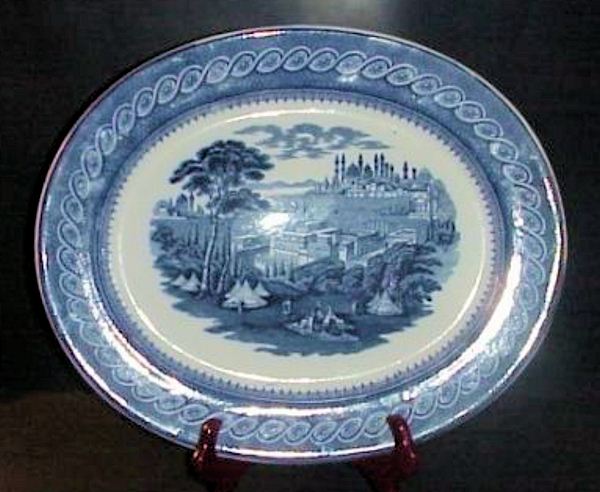
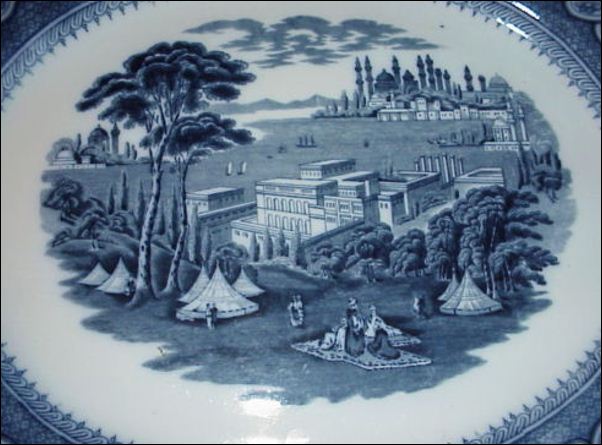
platter in the Byzantium
pattern
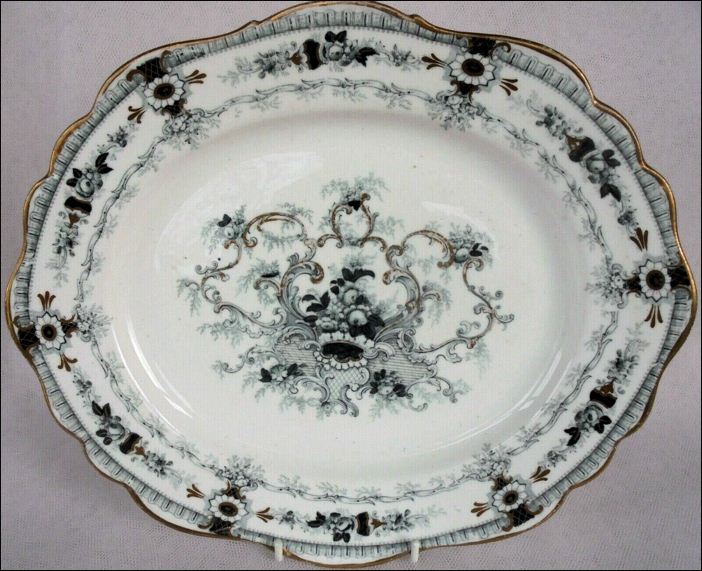 platter in the Souvenir pattern |
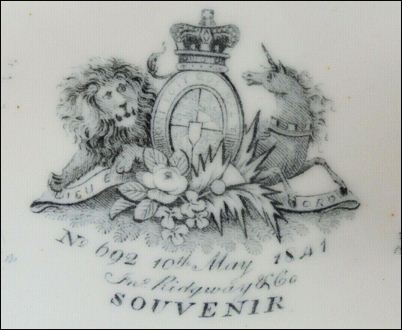 No 692 10th May 1841 Jn Ridgway & Co SOUVENIR The National Archives at Kew has the following information for this design design.
|
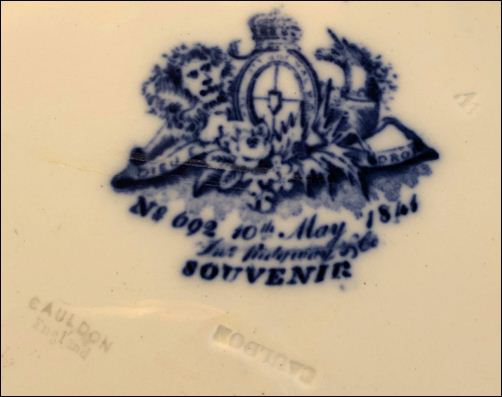
Souvenir pattern mark
with impressed CAULDON England
| The Souvenir pattern was registered on the 10th May 1841, by this date the Royal Arms should have been updated to reflect Queen Victoria's accession to the throne in 1837 - the escutcheon (centre shield) should have been removed. However John Ridgway continued to use this version until the mid 1840s. |
Porcelaine a la Francais
white
ironstone - "Classic Gothic" shape
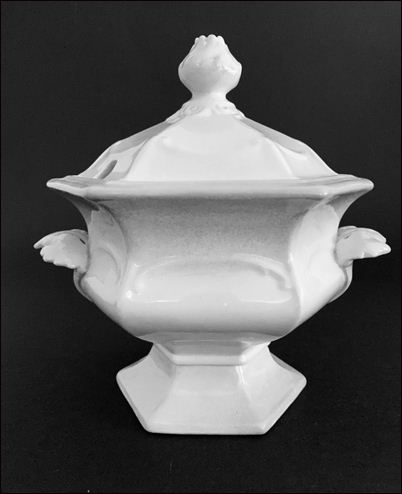 |
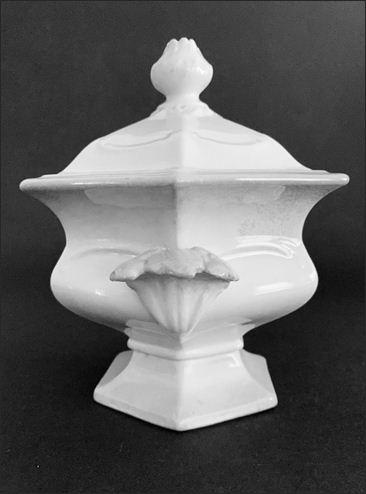 |
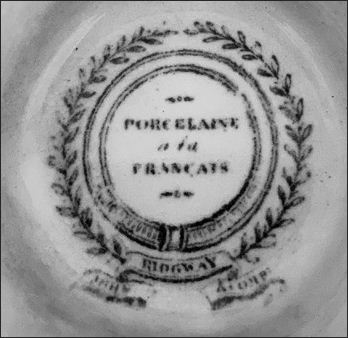 Porcelaine a la Francais John Ridgway & Comp 'Porcelaine a la Francais' was not porcelain nor French but a name used by Ridgway on some of their ironstone earthenware. |
Hexagonal
white ironstone tureen in the "Classic Gothic" shape
registered 19th September 1844
- more information on Ironstone -
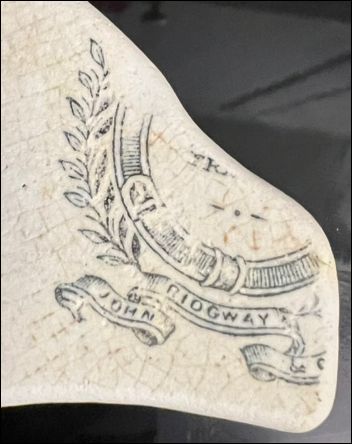
mark
used on white ironstone with the name 'Porcelaine a la Francais'
this shard found (2025) on a beach in New Jersey, USA
photo courtesy: John Lamia
| In 1844, John Ridgway & Co. patented a design called "Classic Gothic," a hexagonal shape with crown finials and scrolled arches. Other potteries offered variations on the "gothic" design during the 1840s. (reference) |
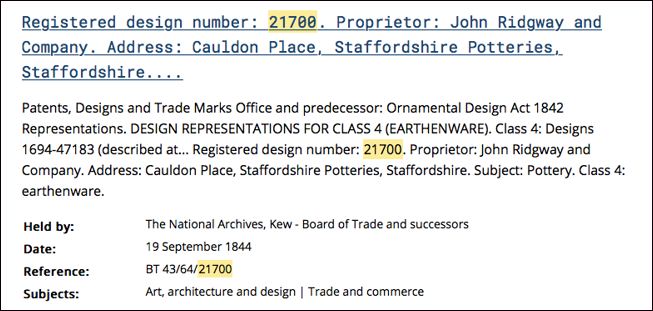
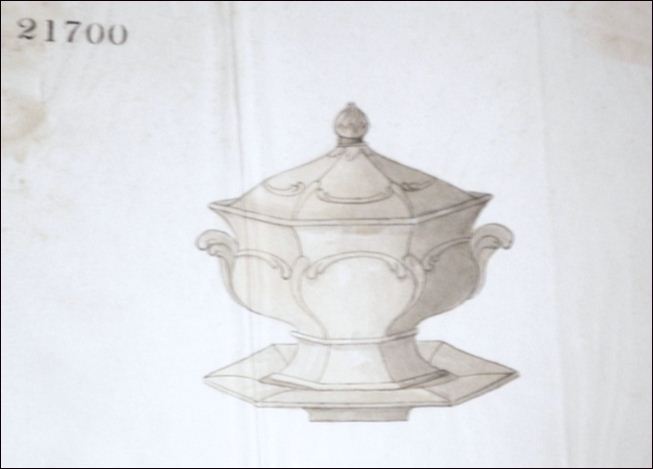
details from the National
Archives, Kew, London for the design registration 21700
photos courtesy: Denise
Schine
- White Ironstone
China Association -
WICA assigned the name Primary Gothic Hexagon to this tureen
Star & Garter pattern
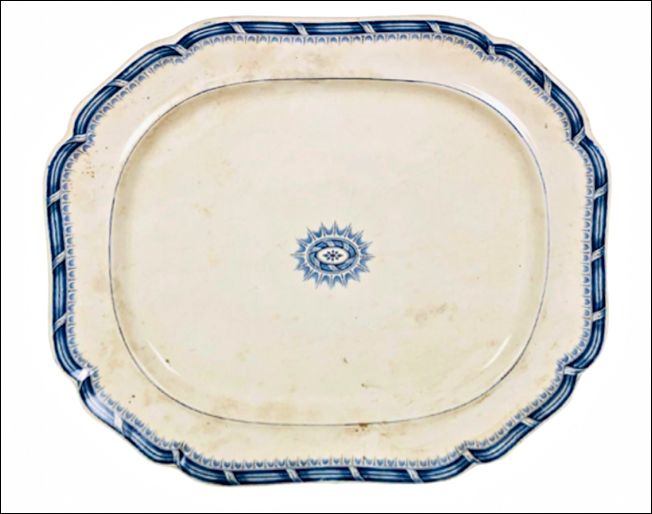 platter in the Star & Garter pattern |
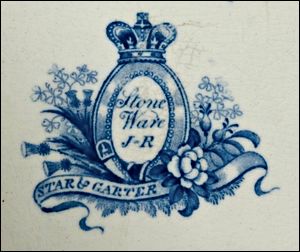 Stone Ware J R Star & Garter |
Edward Walley also made a pattern called Star & Garter
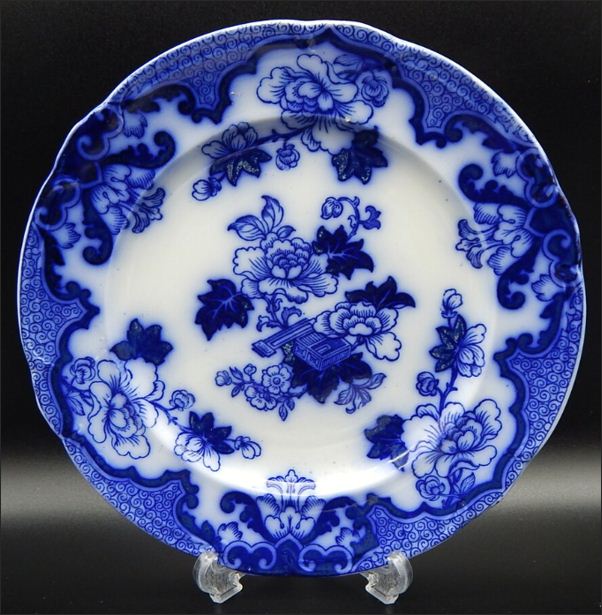 blue transferware plate in the CANDIA pattern |
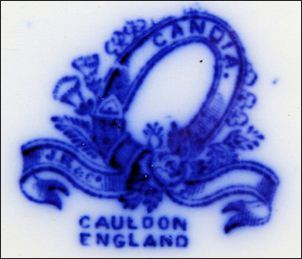 CANDIA J R & Co Cauldon England the potworks were at Cauldon Place |
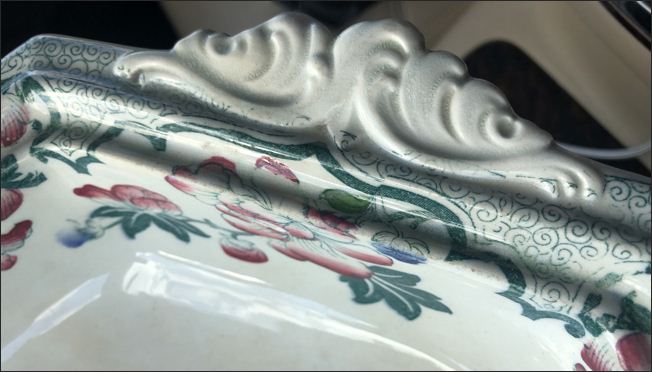 serving bowl in a polychrome CANDIA pattern
|
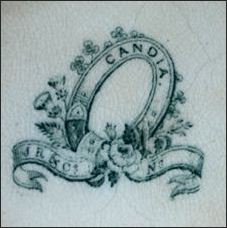 CANDIA J R & Co
|
photos courtesy: Deborah
Barbera
Marks and initials used on ware for identification:
| John Ridgway & Co used a
variety of marks, sometimes the pattern name or number or company name or intitials are included in the mark.
Some marks inclue CAULDON, either as a printed or impressed mark. |
JR
JOHN RIDGWAY
JHN RIDGWAY
I RIDGWAY
J RIDGWAY
marks c.1830-41
later marks (c.1841-55) often have "& Co"
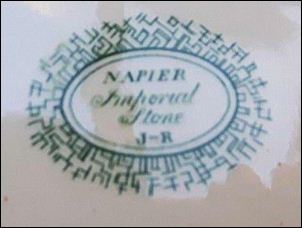 Imperial Stone J-R NAPIER is the pattern name |
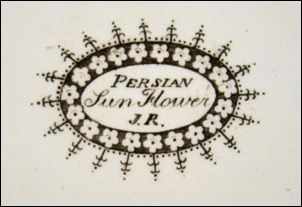 J R PERSIAN Sun Flower is the pattern name |
marks c.1830-41
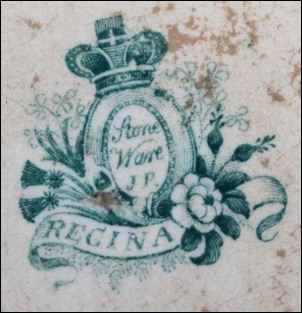 Stone Ware J.R. REGINA is the pattern name |
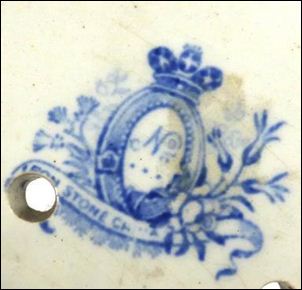 Iron Stone China sometimes no pattern number or intitials are included in the mark |
marks c.1830-41
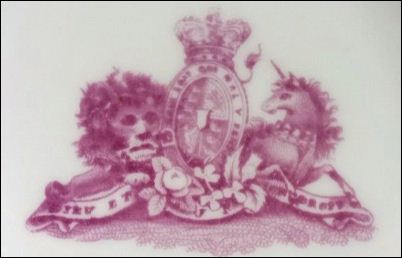
J R
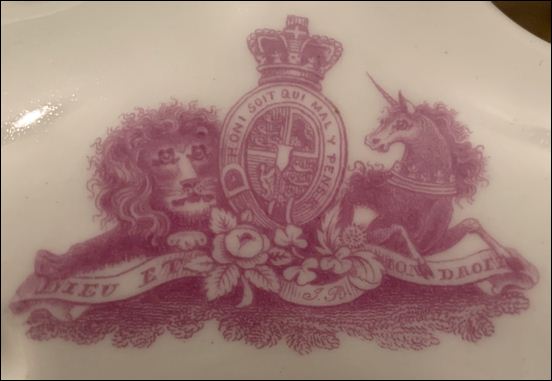
J R
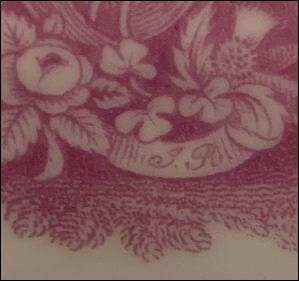
c.1830-37
the initials 'JR' appear in the centre of the ribbon along the bottom
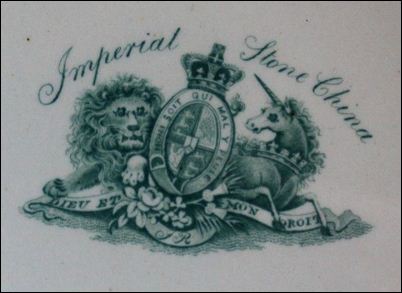
Imperial Stone China
J R
c.1830-37
sometime the mark was used without the initials JR or JR & Co
NOTE:
The Royal Arms with the escutcheon overall (centre shield) is
dated pre-1837 when Victoria became queen (although note that Ridgway
continued to use this style of the Arms until the mid 1840s)
- see more on the Royal Arms -
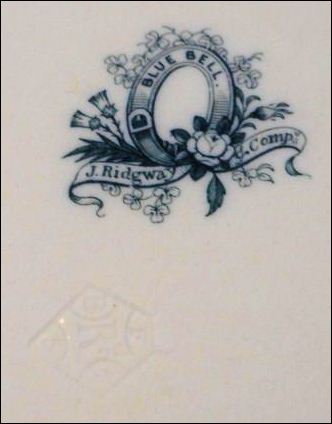
J Ridgway & Compy
c.1847-55
The registration
diamond gives the date of 2nd October 1847
for the pattern registration
BLUE BELL is the pattern name
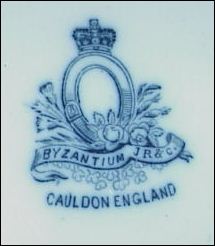
J R & Co
Cauldon England
c.1841-55
BYZANTIUM is the pattern name
CAULDON is the name of the location of the factory
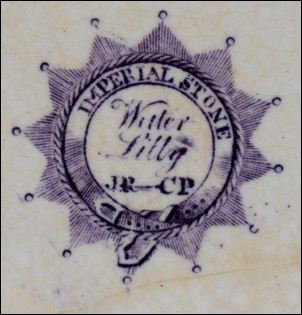
Imperial Stone
JR - CP
Water Lilly is the pattern name
this mark is
attributed to John Ridgway
- the meaning of the initials 'CP' are unknown
they may belong to an agent or distributor -
- click picture for more -
questions/comments/contributions? email: Steve Birks